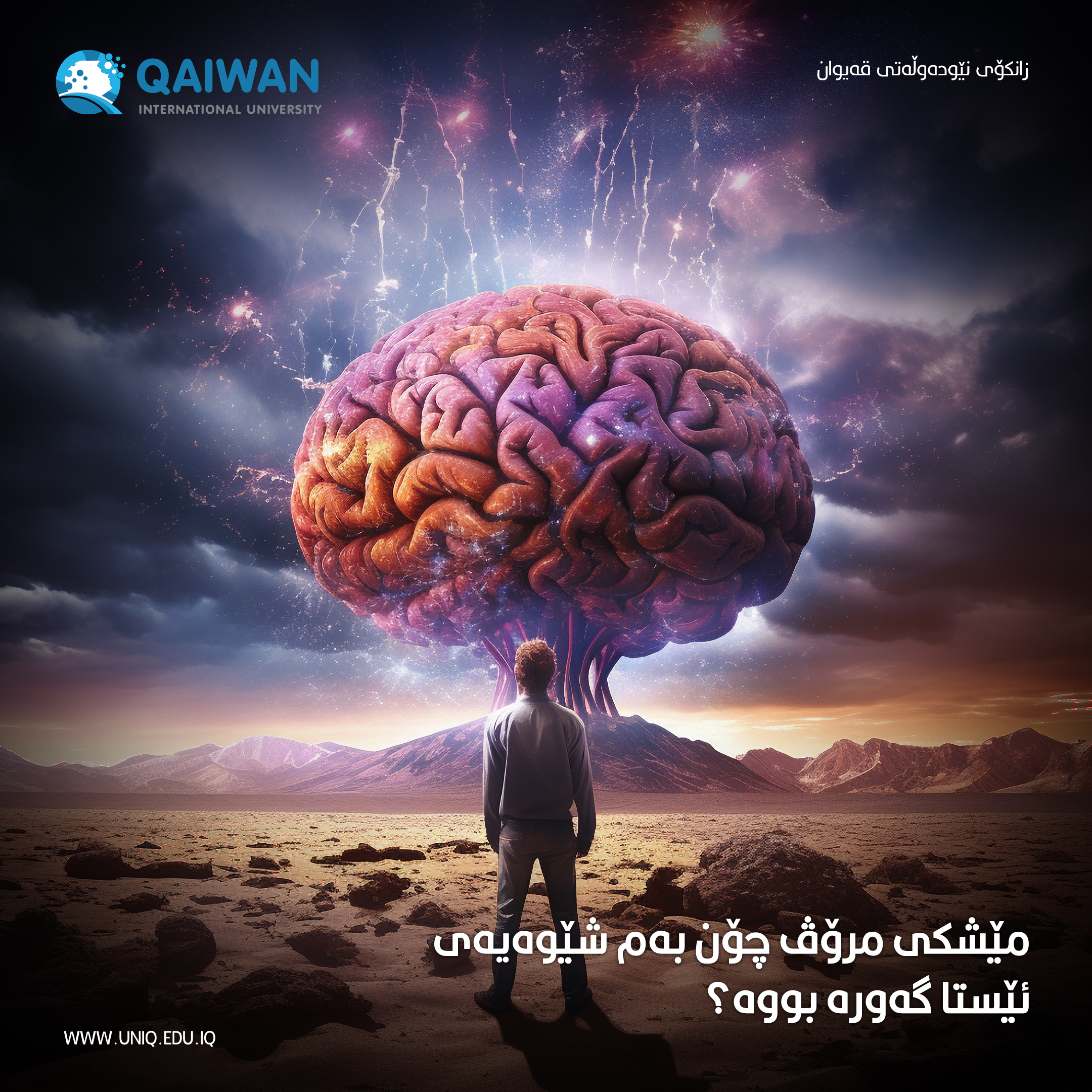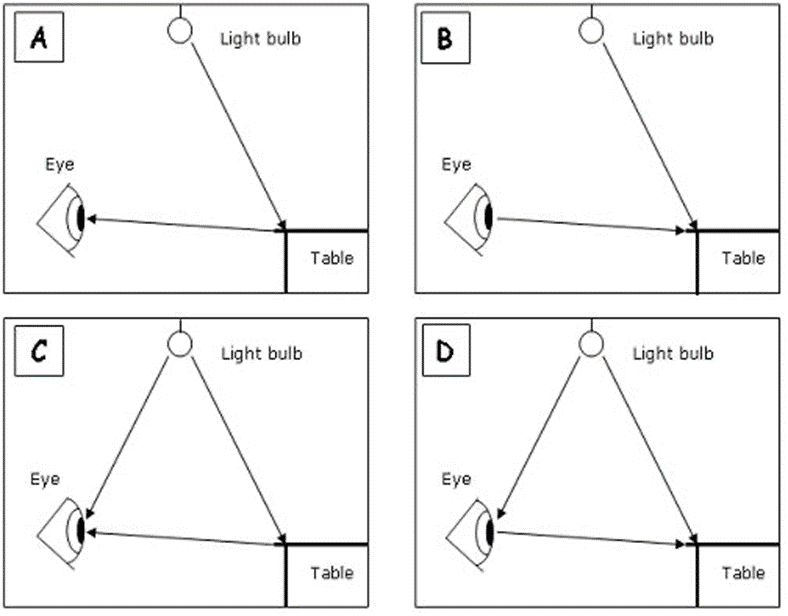
What factors contributed to the development of the human brain in this manner
#QIU

The act of ‘seeing’ an object is the result of light from any luminous source e.g. the Sun, a glowing candle, or a torch, radiating outwardly from the source until it strikes an object and produces a reflection. This reflection travels to the observer’s eyes, where if it retains sufficient intensity, will form an image on the retina at the back of the eye to be interpreted by the brain.
Light is the narrow visible band of radiation in the broad continuous electromagnetic spectrum that ranges from radio waves to gamma rays. Its nature is complex as it transfers energy, but has no mass. It travels at very high speeds (299,800,000 m/s in the vacuum of interstellar space). It will continue traveling indefinitely until it collides with matter where it will be partly reflected and absorbed.
It is a requirement for vision that there be a source of light and that the light it emits either enters the eye directly (ray C in the diagram below), or it travels to an object, the beetle (ray A), where it is reflected to enter a person’s eye (ray B).
Light is so complicated that we commonly use two different models to describe its behavior. Some experimental results support a model of light represented by lots of small particles traveling in straight lines away from the light source in all directions. Alternately, other observed behavior suggests that light is not composed of particles, but is best modeled by using high-frequency waves that can radiate out from the light source and interact with each other. When educating students it is considered inappropriate at this level to introduce these models to them, even though these highlight our incomplete understanding of light.
کردەی ‘بینینی’ تەنێک دەرئەنجامی ڕووناکییە لە هەر سەرچاوەیەکی ڕووناکیەوە بۆ نموونە. خۆر، مۆمێکی درەوشاوە یان مەشخەڵێک، لە سەرچاوەکەوە بەرەو دەرەوە دەدرەوشێتەوە تاوەکو بەر تەنەکە دەکەوێت و ڕەنگ دەداتەوە بۆ ئەوەی گەشت بکات بۆ چاوی چاودێر کە ئەگەر چڕییەکی تەواو بپارێزێت وێنەیەک لەسەر تۆڕی چاو لە پشتی چاوەوە دروست دەکات بۆ... لەلایەن مێشکەوە لێکبدرێتەوە.
ڕووناکی بریتییە لە باندی تەسک و بینراوی تیشکدانەوە لە سپێکتریمی کارۆموگناتیسی بەردەوامی فراواندا کە لە شەپۆلی ڕادیۆییەوە دەست پێدەکات تا تیشکی گاما. سروشتەکەی ئاڵۆزە بەو پێیەی وزە دەگوازێتەوە، بەڵام هیچ بارستەیەکی نییە. بە خێرایی زۆر بەرز دەڕوات (299,800,000 m/s لە بۆشایی بۆشایی نێوان ئەستێرەکاندا). تا کاتێکی نادیار بەردەوام دەبێت لە گەشتکردن تاوەکو بەریەککەوتن لەگەڵ ماددەدا کە بەشێکی ڕەنگدانەوەی دەبێت و بەشێکی هەڵدەمژرێت.
ووناکی ئەوەندە ئاڵۆزە کە ئێمە بە شێوەیەکی باو دوو مۆدێلی جیاواز بەکاردەهێنین بۆ وەسفکردنی ڕەفتارەکانی. هەندێک لە ئەنجامە تاقیکارییەکان پشتگیری لە مۆدێلێکی ڕووناکی دەکەن کە بە کۆمەڵێک گەردیلەی بچووک نوێنەرایەتی دەکرێت کە بە هێڵی ڕاست دوور لە سەرچاوەی ڕووناکی بە هەموو ئاراستەکاندا دەڕۆن. یانیش، ڕەفتارەکانی دیکەی چاودێرکراو پێشنیاری ئەوە دەکەن کە ڕووناکی لە تەنۆلکەکان پێکهاتووە، بەڵکو بە باشترین شێوە مۆدێل دەکرێت بە بەکارهێنانی شەپۆلی فرێکوێنسی بەرز کە دەتوانن لە سەرچاوەی ڕووناکیەوە تیشک بخەنە دەرەوە و کارلێک لەگەڵ یەکتردا بکەن. لەم ئاستەدا بە نەگونجاو دادەنرێت کە ئەم مۆدێلانە بە خوێندکاران بناسێنین، هەرچەندە ئەمانە تیشک دەخەنە سەر تێگەیشتنی ناتەواوی ئێمە لە ڕووناکی.

|
Rawa Kamaran Fattah Rawa Kamaran Fattah currently works at the Faculty of Sciences, at Qaiwan International University. Rawa does research in Molecular Physics, Newtonian Dynamics, Medical Physics, and Nuclear Physics. |
QIU © All Rights Reserved | by QIU IT-Office | @ 2022 QIU University